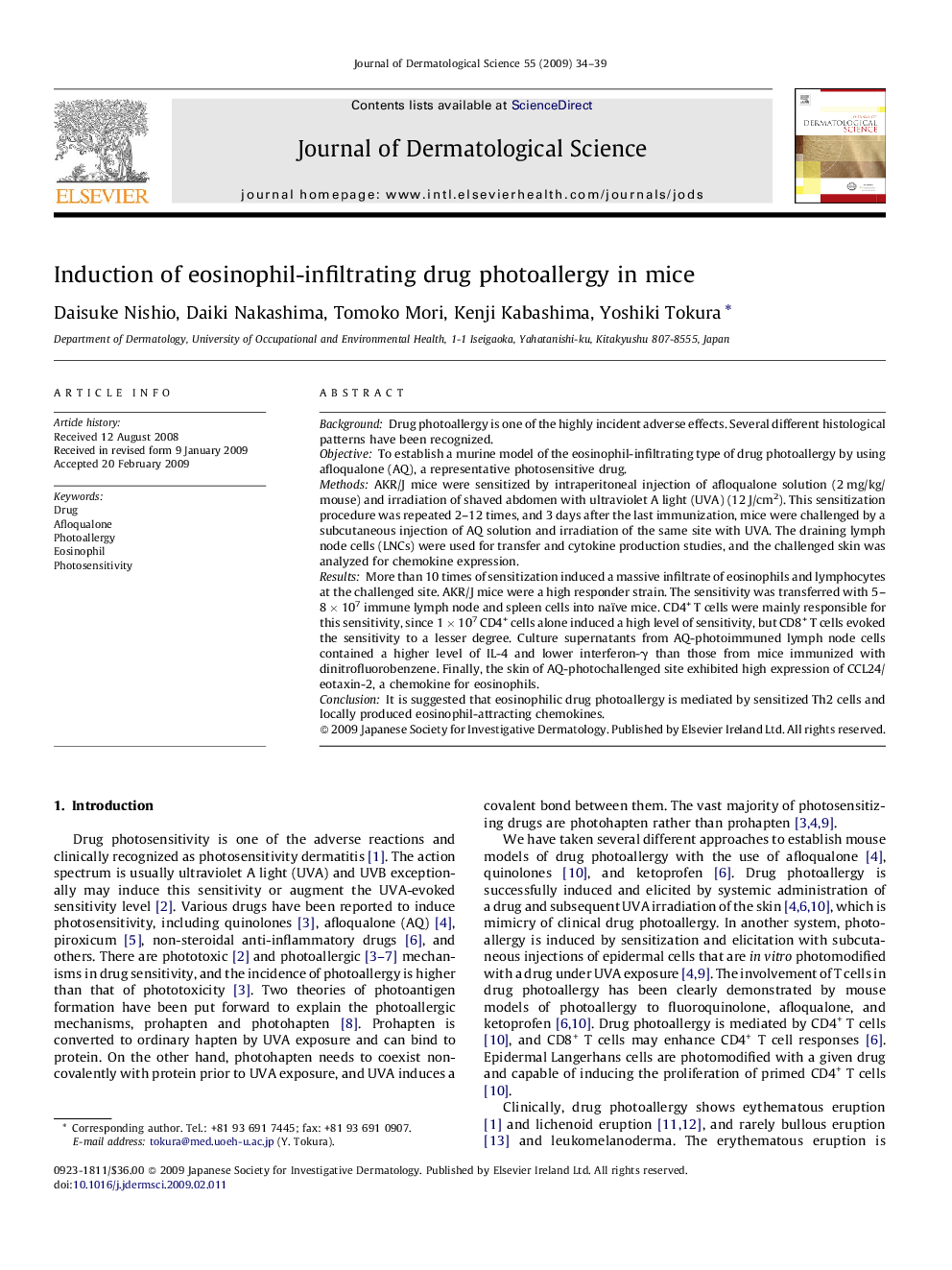| Article ID | Journal | Published Year | Pages | File Type |
|---|---|---|---|---|
| 3214032 | Journal of Dermatological Science | 2009 | 6 Pages |
BackgroundDrug photoallergy is one of the highly incident adverse effects. Several different histological patterns have been recognized.ObjectiveTo establish a murine model of the eosinophil-infiltrating type of drug photoallergy by using afloqualone (AQ), a representative photosensitive drug.MethodsAKR/J mice were sensitized by intraperitoneal injection of afloqualone solution (2 mg/kg/mouse) and irradiation of shaved abdomen with ultraviolet A light (UVA) (12 J/cm2). This sensitization procedure was repeated 2–12 times, and 3 days after the last immunization, mice were challenged by a subcutaneous injection of AQ solution and irradiation of the same site with UVA. The draining lymph node cells (LNCs) were used for transfer and cytokine production studies, and the challenged skin was analyzed for chemokine expression.ResultsMore than 10 times of sensitization induced a massive infiltrate of eosinophils and lymphocytes at the challenged site. AKR/J mice were a high responder strain. The sensitivity was transferred with 5–8 × 107 immune lymph node and spleen cells into naïve mice. CD4+ T cells were mainly responsible for this sensitivity, since 1 × 107 CD4+ cells alone induced a high level of sensitivity, but CD8+ T cells evoked the sensitivity to a lesser degree. Culture supernatants from AQ-photoimmuned lymph node cells contained a higher level of IL-4 and lower interferon-γ than those from mice immunized with dinitrofluorobenzene. Finally, the skin of AQ-photochallenged site exhibited high expression of CCL24/eotaxin-2, a chemokine for eosinophils.ConclusionIt is suggested that eosinophilic drug photoallergy is mediated by sensitized Th2 cells and locally produced eosinophil-attracting chemokines.
